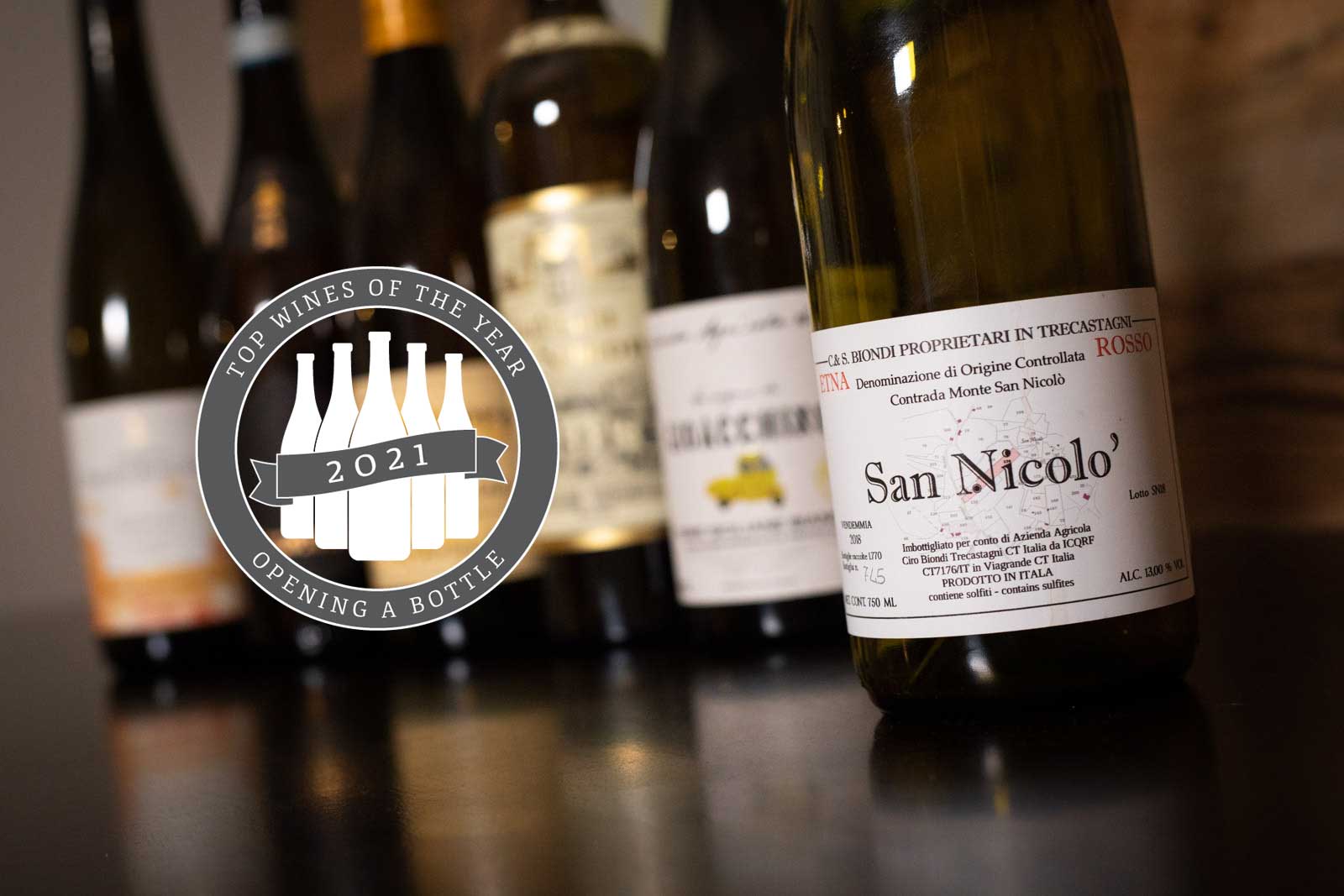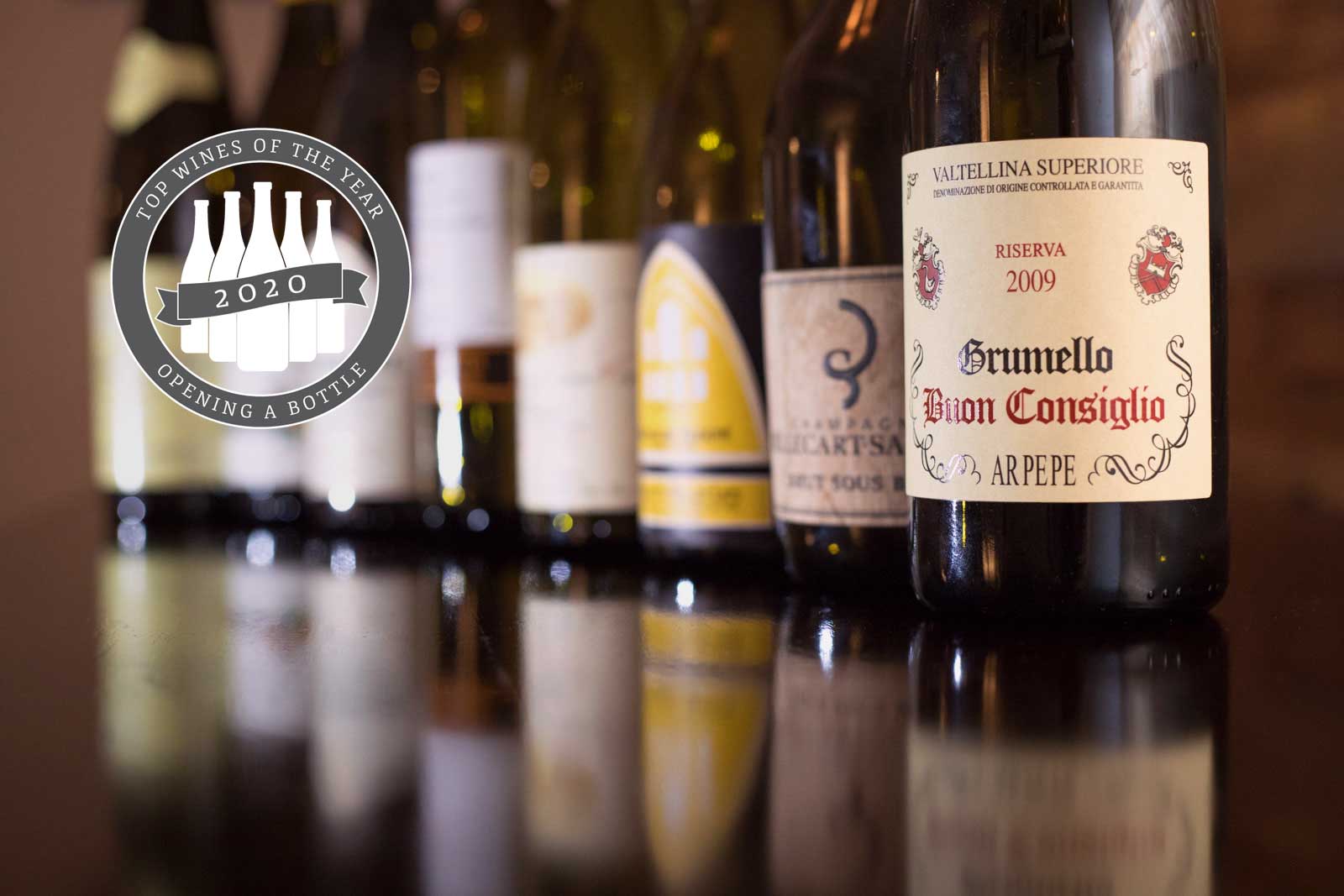Of the nearly 400 wines tasted this year, we have whittled it down to this: the Top 12 Wines of 2021. If they could be assembled into a single box with some cheap cardboard dividers and thrown into your trunk, you’d be set for a good long while.
Who Is Behind This List
Despite more contributor content this year and an expanded focus on Austrian and Spanish wine, I am curating this list once again with a heavy emphasis on my beat: namely, Italian and French wines. These two nations often plenty of variety, and I’m confident that no two wines listed below push the same sensory buttons. I did come close to listing a Greek wine (Domaine Glimavos’ 2018 Vlahiko) as well as an Austrian field blend (Wieninger’s 2019 Wiener Gemischter Satz), but in the end, I couldn’t make the case for their inclusion over the sterling 12 wines profiled below.
Where I Concentrated My Focus
In terms of sample selection and story chasing this year, I increased my focus on the southern reaches of Italy, namely Abruzzo, Campania and especially Sicily, whose Mount Etna accounts for two of the three best wines I tasted all year. Heading south was imperative in France as well. In Provence, introductions to two sterling, historic domaines — Château Simone and Clos Cibonne — reframed my expectation of what wines from the South of France can and should be. As a result, each domaine scored a spot. And of course, the most competitive slot to fill remained the age-worthy red wine, where once again, Nebbiolo ruled. My problem? Which Nebbiolo to choose. Also: Alsace. It continues to make the case to me that it is the world’s top hidden-gem region for classic, expressive, vivacious white wine.
In the end, if we were to do it all over again, these 12 wines would make the final cut. My advice to you: do your best to track down any vintage of these wines in 2022. They were stellar, and promise to be going forward as well.

Kevin Day
Editor-in-Chief
Opening a Bottle
Navigate This List
- No. 12: The Full-Bodied Red Wine – Château La Vieille Cure • Bordeaux
- No. 11: The Robust & Rustic Red Wine – Luigi Tecce • Campania
- No. 10: The Full-Bodied White Wine – Barmès-Buecher • Alsace
- No. 9: The Sparkling Wine – Albert Boxler • Alsace
- No. 8: The Full-Bodied Rosé Wine – Amorotti • Abruzzo
- No. 7: The Esoteric Curiosity Wine – Clos Cibonne • Provence
- No. 6: The Elegant White Wine – Gérard Boulay • Loire
- No. 5: The Age-Worthy Red Wine – Guido Porro • Piedmont
- No. 4: The Age-Worthy White Wine – Chateau Simone • Provence
- No. 3: The Delicate White Wine – Azienda Agricola Sofia • Sicily
- No. 2: The Complex Rumination Wine – Vodopivec • Friuli
- No. 1: The Elegant Red Wine – Ciro Biondi • Sicily
- 2016 Château La Vieille Cure Fronsac
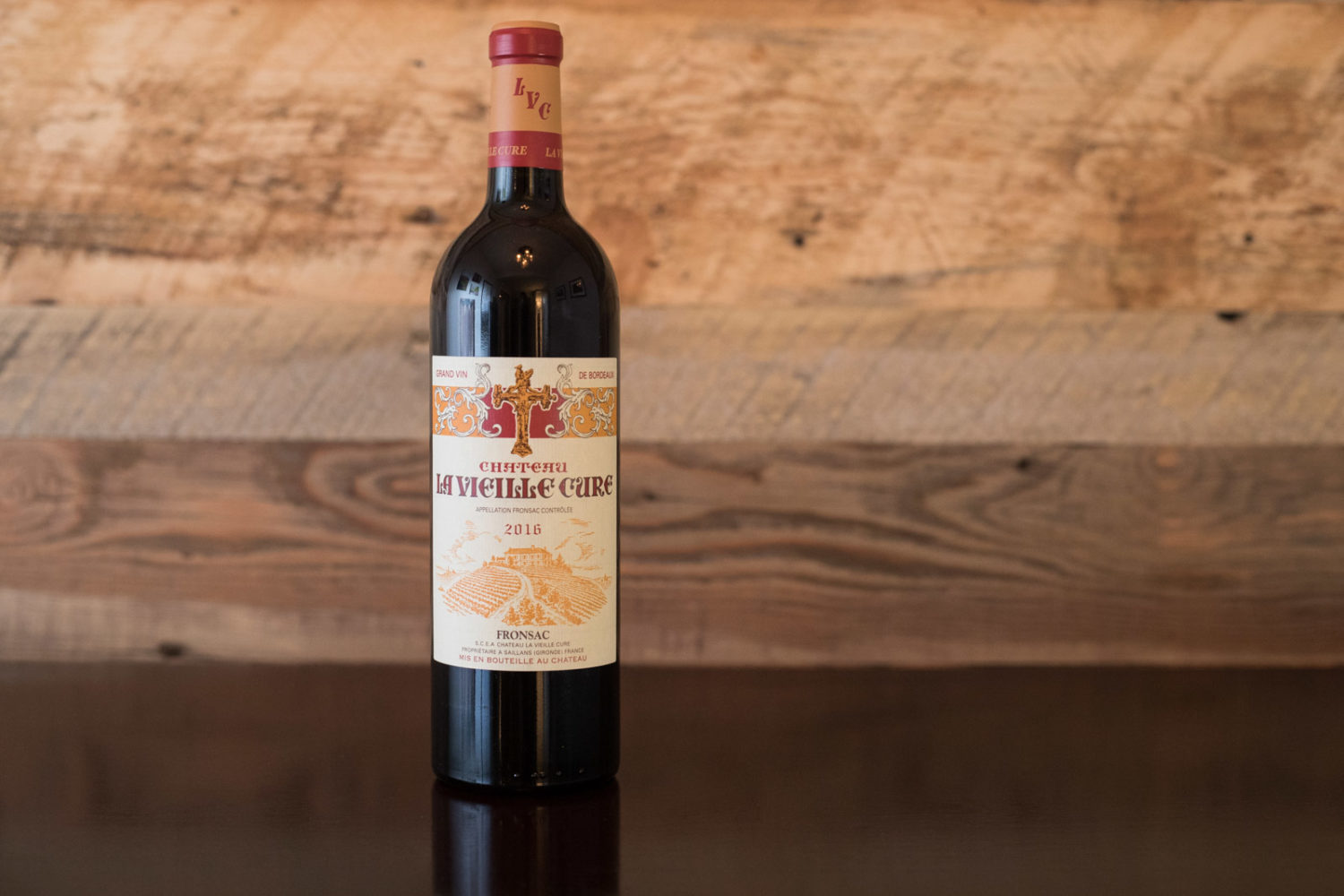
In short, it was catnip for humans.
In the 2016 Château La Vieille Cure Fronsac, we have a wine that retails in the low $30 range, yet satisfies on more accounts than most of its contemporaries. Predominantly made from Merlot (with 10% each to Cabernet Sauvignon and Cabernet Franc), it scintillates with the seductive tones that have made the Bordeaux blend and all its permutations so imitated. As much as I want to resist the blend’s obvious charms, in the case of a wine like this, resistance is futile.
I was enveloped in dark raspberry, sharp plum, cocoa, dried violets and cedar with this wine. In short, it was catnip for humans.
Learn more about our wine icons
Imported by Skurnik
Other Full-Bodied Red Wines I Loved:
- 2011 Vignoble de la Contrie St. Nicolas de Bourgueil
- 2018 Jacky et J.P. Blot Domaine de la Butte “La Pied de la Butte” Bourgueil
- 2013 Château Simone Palette Rouge
- 2015 Ronco del Gnemiz “Rosso di Jacopo” Friuli Colli Orientali
- 2015 Marco Felluga “Ronco dei Moreri” Refosco dal Pendocolo Rosso
- 2016 Casanova di Neri “Irrosso” Toscano Rosso
- 2006 Marchesi di Grésy “Virtus” Langhe Rosso
- 2010 Lopez de Heredia Viña Tondonia “Viña Cubillo” Rioja Crianza
- 2014 Bodega Akutain Rioja Reserva
- 2018 Zulal Wines “Areni” Reserve
- 2014 Luigi Tecce “Poliphemo” Vecchie Vigne Taurasi Riserva

Rather than complementing food, it wrestled it into submission.
It seems as though some wines want to be loved. Luigi Tecce’s 2014 Poliphemo Vecchie Vigne Taurasi Riserva was not one of those wines. It was rugged, coarsely tannic and as savory as a T-bone. Rather than complementing food, it wrestled it into submission. And yet, I welcomed every moment with this towering wine, for somehow it was devilishly charming and unapologetic about its origins.
At seven years of age, it had found its balance. The tannins were still unflinching, as the Aglianico grape is well-known for, but they served their purpose and lent traction to a wine that was so untamed it needed the grip. I especially loved the unusual, iron-infused aromas that permeated the wine’s dense blackberry-like fruit.
Taurasi wines sometimes seem as though they are aspiring for popularity. But not this wild man. This is Campania’s interior, a place forged by volcanoes and overlooked by tourists. To drink from its hillsides, one may as well seek out its unique voice — even if it has a little rasp.
Read Tasting Report: 12 Selections from Campania.
Learn more about these wine icons
Imported by Portovino Italiano
Other Robust and Rustic Red Wines I Loved:
- 2014 Luigi Tecce “Puro Sangue” Taurasi
- 2016 Torricino “Cevotiempo” Taurasi
- 2019 Fattoria Selvapiana Chianti Rufina
- 2016 Amorotti Montepulciano d’Abruzzo
- 2017 Brezza “Vigna Santa Rosalina” Barbera d’Alba
- 2018 Domaine Barmès-Buecher Alsace Grand Cru Hengst Riesling

This was a wine for gleeful surrender.
Pound for pound, silk is actually stronger than steel. We often talk about structure in a wine like it has an architectural frame — a skyscraper impervious to howling winds and earthquakes. But I’ve found that “structure” needs to be looked at differently with Riesling, a wine whose best versions demonstrate a mysterious sense of strength more akin to an unflappable spider’s web.
This “a-ha moment” came to me while tasting Barmès-Buecher’s 2018 Alsace Grand Cru Hengst Riesling this spring. The terroir conversation surrounding the Hengst always centers of its power, but that seems like a pretty dumb word for what is going on here. Barmès-Buecher’s version was taut yet diaphanous, with a complex swirl of flavors suggesting dark apple, beeswax, sandalwood, olive and soft leather. What was holding all of this together was undoubtedly something with tensile resolve. Like a spider’s web, it could be explained on a technical level, but where’s the fun in that? This was a wine for gleeful surrender.
Read our profile, Barmès-Buecher: Biodynamics as a Family Heirloom
Learn more about these wine icons
Imported by Petit Pois Imports and Old World Wine Co.
Other Full-Bodied White Wines I Loved:
- 2019 Domaine Barmès-Buecher Clos Sand Riesling
- 2018 Domaine Camille Braun Alsace Grand Cru Pfersigberg Riesling
- 2016 Domaine Valentin Zusslin Alsace Grand Cru Pfersigberg Riesling
- 2019 Domaine Robert Roth Hornstein Alsace Riesling
- 2019 Domaine Maurice Schoech Alsace Grand Cru Kaefferkopf Riesling
- 2017 Domaine Maurice Schoech Harmonie “R” Complantation Alsace
- 2012 Dr. Pauly-Bergweiler Ürziger-Würzgarten Riesling
- 2018 Pacher Hof Alto-Adige/Südtirol Valle Isarco Riesling
- 2017 François Chidaine “Les Bournais” Montlouis-Sur-Loire
- 2019 Zulal Wines Vayots Dzor Voskehat
- 2014 Albert Boxler Crémant d’Alsace

It outclassed every Champagne I tasted this year by a mile.
Traditional-method sparkling wine is famously difficult to make. It demands specific growing conditions to achieve the right balance of acidity and sugar, a watchful eye through the first and second fermentation, as well as specialized equipment (or a very deft touch) to get the lees out of the bottle. Even then, threading this needle and creating a wine that is memorable and distinctive in a crowded field of sameness … no wonder the best sparklers are pricey.
So then what the hell is up with Albert Boxler’s Crémant d’Alsace? This jewel of a wine — which I found perfect on every level, and I mean that: perfect — sells for a measly $36. Meanwhile, it outclassed every Champagne I tasted this year by a mile, proving once again that (a) you don’t need “noble” grapes to create something epic (it’s mostly Pinot Blanc and Pinot Auxerois) and (b) Alsace is killing it and few seem to notice.
Learn more about these wine icons
Imported by Kermit Lynch Wine Merchant
Other Sparkling Wines I Loved:
- NV Meyer-Fonné Crémant d’Alsace Extra Brut
- NV Champagne J. Lasalle “Cachet Or” Premier Cru Champagne Brut
- 2015 Endrizzi “Piancastello” Trentodoc Riserva
- NV Maso Martis Blanc de Blanc Trentodoc
- NV Majolini “Altèra” Franciacorta Rosé
- 2018 Amorotti Cerasuolo d’Abruzzo
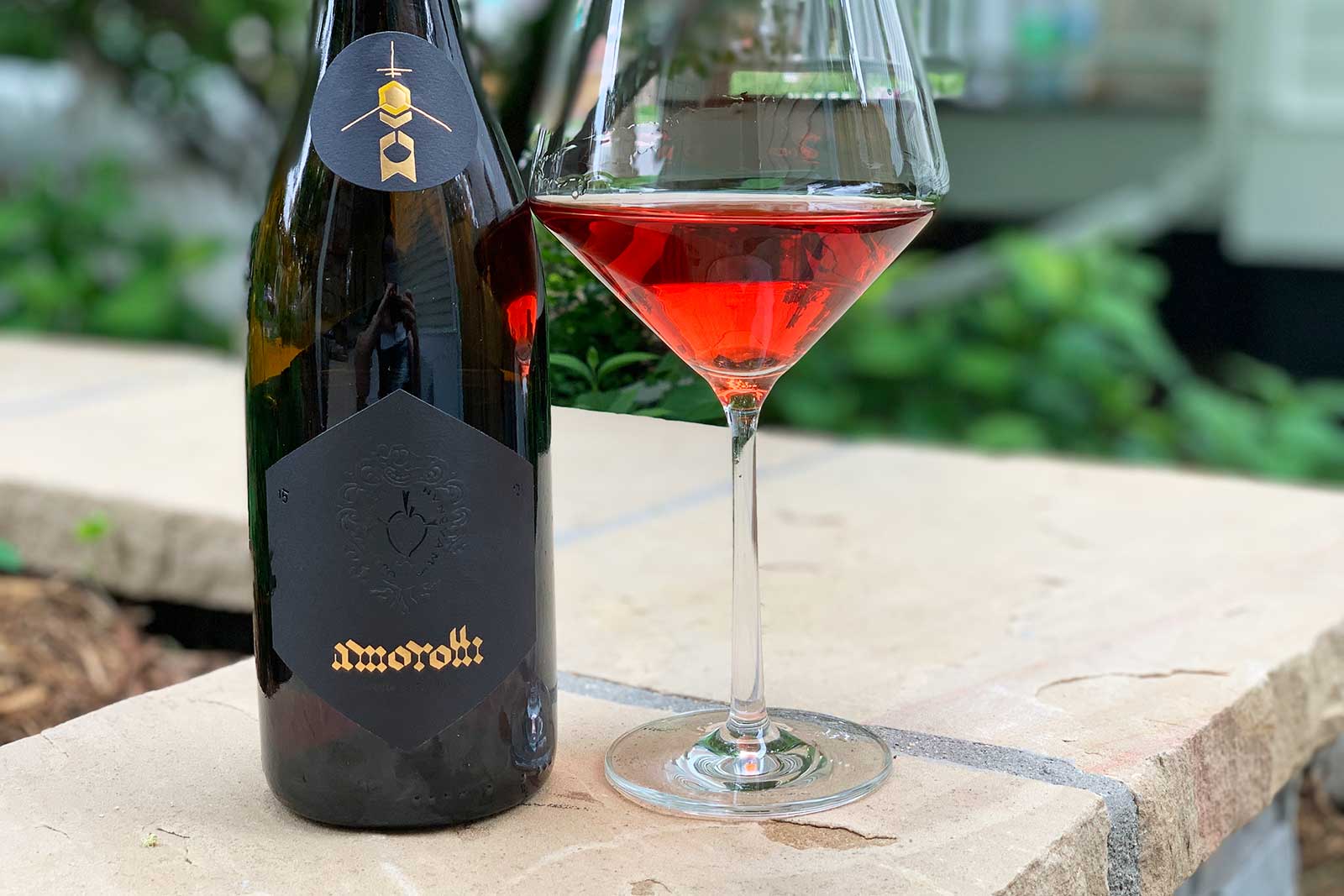
That’s not necessarily something you’d make a slushy with, now is it?
The hallmark of a great rosé is often the degree to which is defies our expectation of rosé. For the first time in our publication’s history, the top 12 includes two rosé wines. For very different reasons, they rewired my circuitry on all things pink.
From the mountainous region of Abruzzo, Italy comes this wine — the 2018 Amorotti Cerasuolo d’Abruzzo. For one, it’s not pink. Vermillion is more like it. And on the richly enticing nose, it offered up strong suggestions of apricot, blood orange and apple, as well as yellow flowers and an oxidative tinge I likened in my notes to a beeswax candle. That’s not necessarily something you’d make a slushy with, now is it?
But enough fawning over the look and smell. This wine is supremely easy to drink and deeply satisfying. It seemed to fill every corner of the palate with its glossy texture and bright, radiant nature. I even began to wonder if it was a rosé. Yes, the technique would qualify, but the profile was more akin to a light red wine that you chill.
It is worth noting that the other two wines made by Amorotti — a Trebbiano d’Abruzzo and a Montepulciano d’Abruzzo — nearly cracked this list as well. This is a producer worth knowing, and his wines are worth clamoring for.
Learn more about these wine icons
Imported by Jan d’Amore Wines
Other Full-Bodied Rosé/Light-Bodied Red Wines I Loved:
- 2020 Valle dell’Abate “Il Frappato” Vittoria Frappato
- 2016 Scarpa “La Selva di Moirano” Vino Rosso
- 2018 Poggerino “Aurora” Toscano Rosato
- 2020 G.D. Vajra “Rosa Bella” Vino Rosato
- 2020 Domaine Gueneau “Chavignolet” Sancerre Rosé
- 2020 Château Pradeaux Bandol Rosé
- 2014 Clos Cibonne “Cuvée des Vignettes” Côtes de Provence Tibouren

If you’ve ever walked into a bakery and kindly asked at the counter if you could die there, then this wine’s aromas are for you.
And here is that other rosé I just mentioned: an aged, gently oxidized version comprised of 90% Tibouren and 10% Grenache hailing from one of Provence’s most idiosyncratic wineries: Clos Cibonne. A profile on this estate is coming soon to the pages of Opening a Bottle, so I won’t be too exhaustive here. Like Amorotti’s Cerasuolo d’Abruzzo and Vodopivec’s “Origine” (scroll down to No. 2), Clos Cibonne’s 2014 “Cuvée des Vignettes” is a feast for the eyes. A seemingly burnished shade of carnelian.
But it was the aromas and texture that stirred my emotions. If you’ve ever walked into a bakery and kindly asked at the counter if you could die there, then this wine’s aromas are for you. In order of most noticeable, they were like vanilla bean, tangerine, baked apple and nutmeg, yet with a vinous quality that rooted my senses (s’il vous plaît, quittez la boulangerie, monsieur). On the palate, it is quite enveloping, with relaxed yet still-momentous acidity and a nutty finish. Clos Cibonne’s secret lies in its terroir and process, which again, we will get into in a few weeks. But this was a rosé that challenged the pat definition of the category that, ironically, its home region has fostered and proliferated.
I’m calling this slot in the mixed case the “curiosity wine,” for each 12-pack you assemble ought to have one wine to push you beyond your comfort zone. This wine accomplishes that task brilliantly.
Learn more about these wine icons
Imported by deMaison Selections
Other Curiosity Wines I Loved:
- 2018 Clos Cibonne Tibouren Côtes de Provence Cru Classé
- 2017 Jean Perrier et Fils “Cuvée Gastronomie” Mondeus Savoie
- 2016 Tenuta Anfossa “Poggio Pini” Rossese di Dolceacqua
- 2016 Tenuta Anfossa “Antea” Vino Bianco Liguria
- 2015 Vodopivec “Origine” Vitovska Venezia Giulia
- 2020 Gönc “Canvas Rosé” Pet-Nat
- 2020 Weingut Knauss “La Boutanche” Trollinger
- 2018 Heinrich “Naked” Red
- 2019 Gérard Boulay “à Chavignol” Sancerre
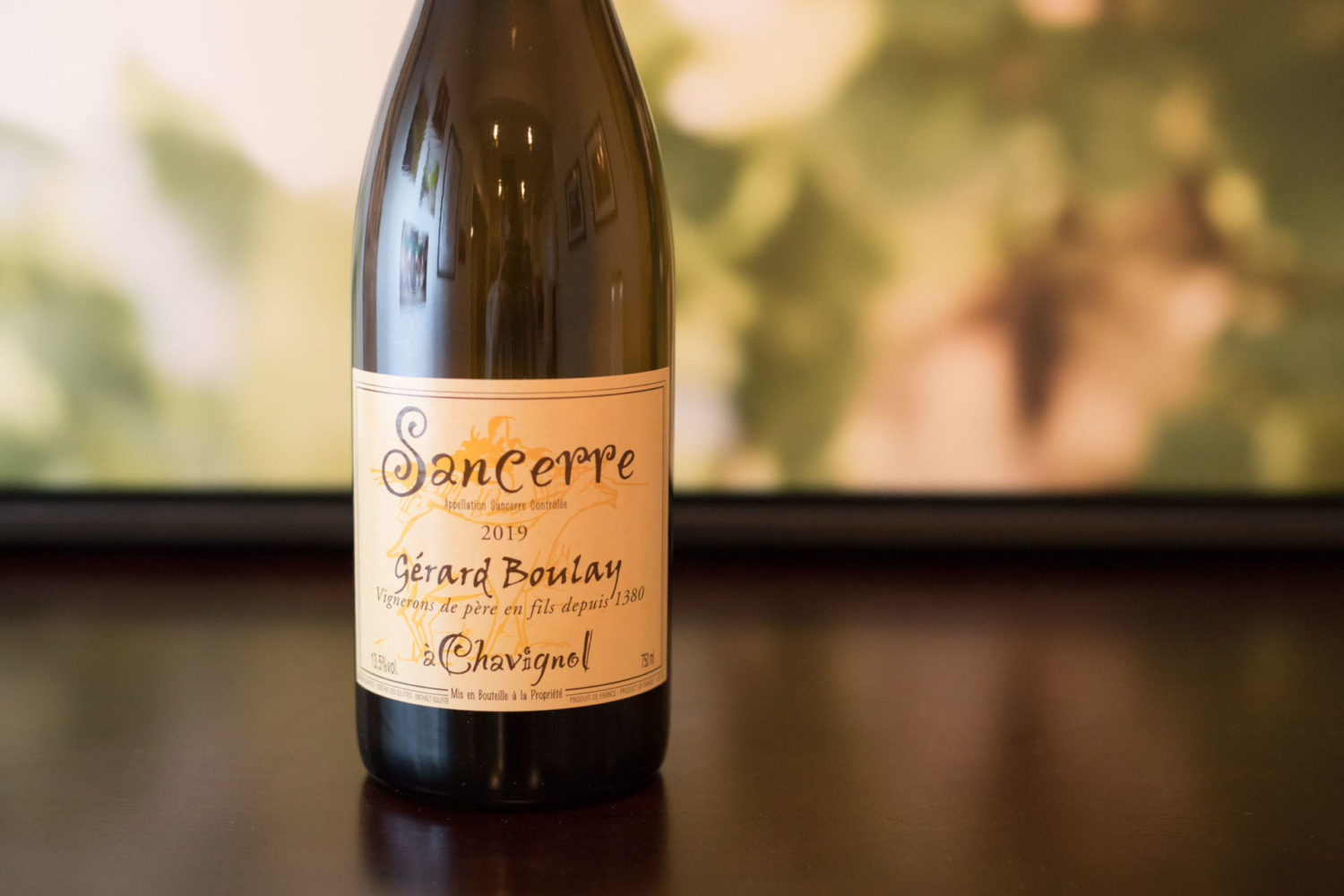
Every part of this wine did its job to thrill the senses with each sip.
“No wasted space.” That’s the note I scribbled that sums up this gossamer Sancerre best. Not the extreme sense of freshness or the petrichor-like minerality. Nor the rose water tones or faintly candied papaya-like aroma. It was the palate presence: every part of the wine doing its job to thrill the senses with each sip.
This is striking to me because Sauvignon Blanc — and even many versions hailing from Sancerre — can be among the biggest space-wasters in the white-wine world. Think of a man-spreader on the subway, only he’s decked out in far too much cologne and yapping too loudly on his cell phone. Whether it is the pop of gooseberries, or the lip puckering acidity like an underripe grapefruit, Sauv Blanc can be a noisy, obnoxious grape. And as a result, it is easy to write off and ignore.
Yet where winemaker Gérard Boulay operates, in the village of Chavignol in Sancerre, the same Kimmeridgian marl soil that lends nearby Chablis its precision transforms Sauvignon Blanc into a gracious and generous soul. It was an attribute that also shined in Elise Gueneau’s 2018 “Les Terre Blanches” Sancerre, also from Chavignol, and to a lesser extent in Domaine Vacheron’s 2019 Sancerre, a blend of plots.
There are artisans in this famous growing region; producers capable of finely wrought Sauvignon Blanc that can make the hairs on your arm stand up with their thrilling aromas and fine texture. Producers that can help Sauv Blanc Haters like me overcome our bias. They also exist in Friuli, I might add. You just have to do a little research.
My tip: start with Gérard Boulay’s “à Chavignol” Sancerre. It’s magnificent.
Learn more about these wine icons
Imported by Old World Wine Co. and Polaner Selections
Other Elegant White Wines I Loved:
- 2018 Domaine Gueneau “Les Terres Blanches” Sancerre
- 2019 Domaine Vacheron Sancerre
- 2018 Jonathan Didier Pabiot “Florilège” Pouilly-Fumé
- 2019 Jean-Jacques Confuron “Aux Plantes” Bourgogne Aligoté
- 2017 Domaine Ostertag “Les Jardin” Alsace Pinot Gris
- 2013 Russiz Superiore Collio Sauvignon Blanc Riserva
- 2015 Borgo del Tiglio Collio Friulano
- 2018 Tiefenbrunner “Feldmarschall Von Ferner” Alto Adige Müller Thurgau
- 2019 Inama “Vigneti di Foscarino” Soave Classico
- 2019 Wieninger Wiener Gemischter Satz
- 2019 Santo Winery Santorini Assyrtiko
- 2016 Guido Porro “Vigna Lazzairasco” Barolo

It redefined for me what power and structure can mean, but specifically in a Barolo.
As long as I am curating this annual tradition, there will always be a Nebbiolo wine toward the top.
But behind the scenes, assigning which Nebbiolo to list is the most daunting task of all. If I am being honest, 5 of the best 12 wines this year — in terms of complexity, memorability, versatility and overall deliciousness — were from this grape. Whittling it down to one is a head-scratcher, particularly because assigning notes to great Nebbiolo wines is akin to catching fireflies in the dark. Its nearly impossible for me to say whether drinking Brezza’s Cannubi Barolo was a greater wine moment than slowly sipping Ferrando’s “Etichetta Bianca” Carema. Also fraught territory: determining whether Cavallotto’s 2018 Langhe Nebbiolo — a baby Barolo if there ever was one — is a finer achievement than Petterrino’s 2011 Gattinara Riserva, which underscored the singular focus and long-aging approach of a little-known master in Alto Piemonte.
Tipping the scales on which wine makes the list relies on specific sips and what those fleeting moments said before the wine shifted once again. Nebbiolo is the definition of a moving target. I love it so much.
That said, I have settled upon Guido Porro’s 2016 Vigna Lazzairasco Barolo as my selection. Like Barmès-Buecher’s Riesling, it redefined for me what power and structure can mean, but specifically in a Barolo. The wines from the Serralunga d’Alba village of the DOCG are reputed for their stern quality and densely packed tannins. Experience has taught me to approach this village’s younger wines with a decanter and hours to spare.
But Guido Porro’s wines — such as the 2016 Vigna Santa Caterina and especially the 2016 Vigna Lazzairasco, both micro plots from the Lazzarito cru — revealed that even in youth, those Serravallian soils of the village are capable of revealing their magic of focused power, the latter of which you really feel on the finish at this stage: a rumbling, rib-shaking bass note on sustain. One the nose, tones recalling blue fruits and violets shine, while potting soil, mushrooms and black licorice flavors lend a whip-crack of sassiness. To think: at five years of age, this wine is only just getting started.
Learn more about these wine icons
Imported by Kermit Lynch Wine Merchant
Other Age-Worthy Red Wines I Loved:
- 2016 Guido Porro Vigna Santa Caterina Barolo
- 2016 Brezza Cannubi Barolo
- 2016 Brezza Castellero Barolo
- 2016 Castello di Verduno Barolo
- 2015 Giulia Negri Serradenari Barolo
- 2018 Cavallotto Langhe Nebbiolo
- 2017 Ca del Baio Asili Barbaresco
- 2016 Ferrando “Etichetta Bianca” Carema
- 2011 Petterrino Gattinara Riserva
- 2011 Cantalupo Ghemme
- 2016 Produttori di Nebbiolo di Carema
- 2017 Le Ragnaie “Troncone” Toscano Rosso
- 2018 Val di Suga Rosso di Montalcino
- 2017 Alain Voge “Les Vieilles Vignes” Cornas
- 2017 Bénédicte & Stephane Tissot “En Barberon” Côtes du Jura Pinot Noir
- 2013 Château Simone Palette Rouge
- 2019 O Estrangeiro “Garda de 7 Meses” Ribeira Sacra
- 2012 Château Simone Palette Blanc
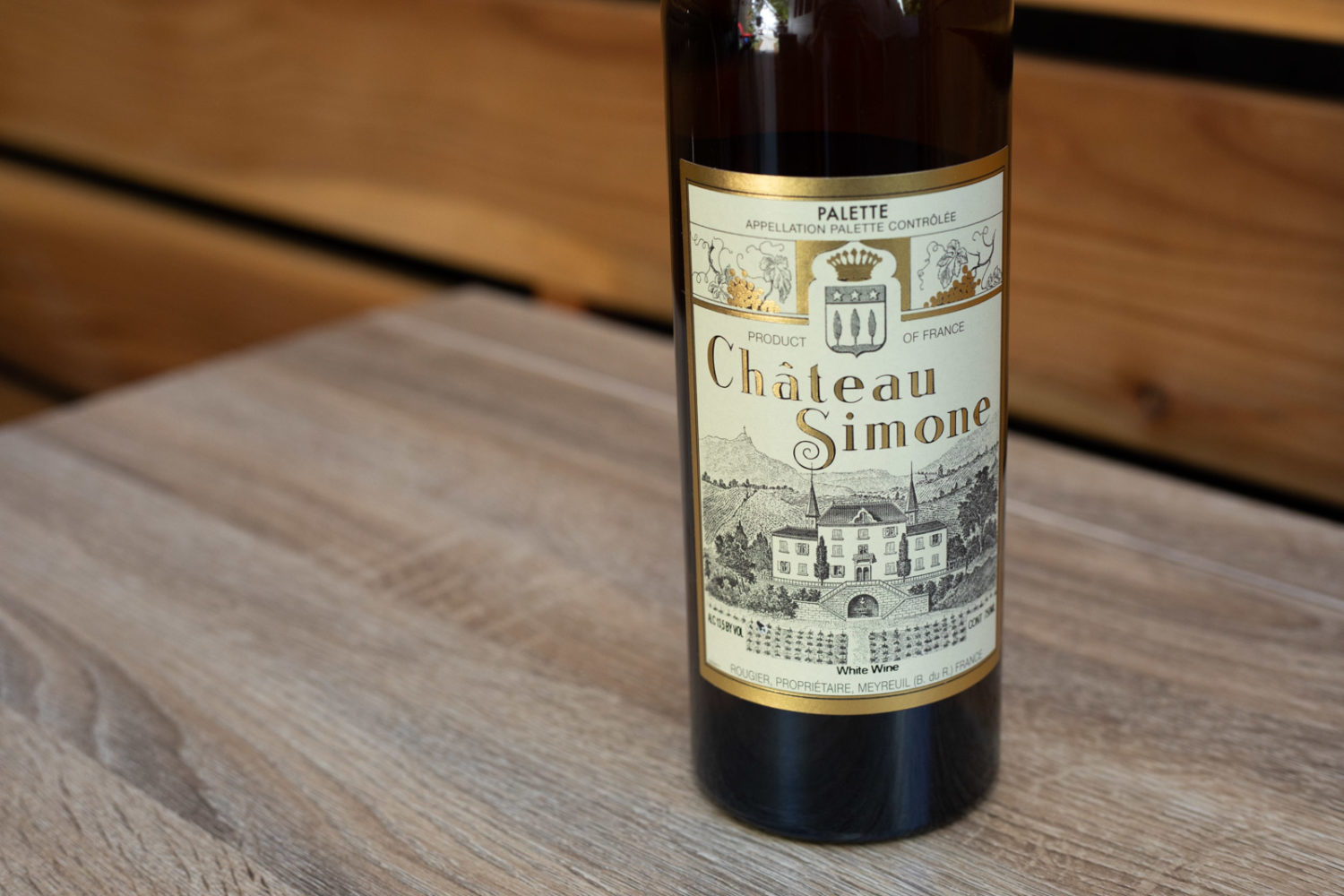
It was rich and decadent, oxidized a smidge and weathered by time with a loping acidity that bordered on creaminess.
The show Mad Men (AMC, 2007-2015) was one of the most tautly scripted TV dramas in history. Its protagonist, an aloof but dazzling ad man in the 1960s named Don Draper, had the habit of turning sales pitches into high art. His best moment was in the now-famous Carousel pitch to Kodak, where he relayed a story of an old copywriter named Teddy who told him “the most important idea in advertising is new” — only to say that a more “delicate, but potent” idea could be found in nostalgia, or “the pain from an old wound” in Greek.
Natural wine is far too broad a category to pigeon-hole, but there is a certain acceptance within the ranks of its acolytes to accept simplicity, the unexpected, and even flaws, as a defining feature of taste. I suspect that they’re often celebrated because it seems new. Ironically, this newness is not founded on technology but a wholesale embrace of low-intervention. Farm animals smells, jagged acidity and an absence of tannin are just “a glittering lure,” as Don Draper calls it — the calamine lotion to soothe people’s itchy boredom with sameness in wine.
Taste is dynamic, and while I accepted some of this in year’s past, this year — despite a wholesale enthusiasm for the philosophy of natural wine — I found these traits utterly fatiguing.
It is perhaps not surprising, in hindsight, that I gravitated to Château Simone’s 2012 Palette Blanc this summer. The label itself is nostalgia writ large, but with a Gatsby era sense of fun often missing from other chateaux marketing. Château Simone is certified organic, and its work with Clairette — an ancient and often misunderstood grape variety — had me intrigued.
What the 2012 presents in the glass is, in many ways, the antithesis of what’s in vogue right now. It was rich and decadent, oxidized a smidge and weathered by time with a loping acidity that bordered on creaminess. My nose kept telling me “vanilla beans, hazelnuts and bananas,” yet I was not picturing a dessert cart … I was longing for a Cubano sandwich, a grilled pork chop or even a slab of bacon. The nifty little trick here was the wine’s nebulous, old-school charm. Stubborness and a refusal to modify the approach over generations had, strangely, led me to something that tasted new and nostalgic all at once. Delicate, and potent, indeed.
*Learn more about these icons.
Imported by Rosenthal Wine Merchants
Other Age-Worthy White Wines I Loved:
- 2018 Bénédicte & Stéphane Tissot “Patchwork” Arbois Chardonnay
- 2017 François Chidaine “Les Bournais” Montlouis-Sur-Loire
- 2018 Pascal Janvier Jasnières
- 2018 Amorotti Trebbiano d’Abruzzo
- 2017 Tenuta Anfossa “Antea” Vino Bianco Liguria
- 2019 Hatzidakis “Cuvée 15” Santorini Assyrtiko
- 2019 Azienda Agricola Sofia “La Vigna de Gioacchino” Terre Siciliane Bianco

I especially loved its wintergreen-like snappiness, which nicely countered the ripe nectarine, lemon tea and briny aromas.
The Carricante-based wines from Mount Etna operate on their own frequency, and require of the drinker a certain level of patience. Numerous times, my encounters with these wines have tempted me to write that’s it? in my notes. But experience has shown that Carricante’s beguiling beauty lies just below the surface. Time, air and even the warmth of your hand on the glass are enough to bring out some of the wildest, most mysterious aromas in the world of wine.
Sofia’s 2019 “La Vigna di Gioacchino” hails from the northern slope of Etna, and as a result it has a bit more punch than most of its peers. Still, lined up next to a Grillo or even a Vermentino, it would seem like a wallflower. What those wines undoubtedly lack, however, is endurance. “La Vigna di Gioacchino,” on the other hand, was a triathlete, shifting with constant versatility and endurance from cork-pull to last drop. I especially loved its wintergreen-like snappiness, which nicely countered the ripe nectarine, lemon tea and briny aromas. But I was most impressed by the wine’s feathery texture, which seemed like an illusion at times — its lightness straddling the line between liquid and air.
I debated for a long time on whether this slot belonged to Benanti’s 2018 Contrada Rinazzo Etna Bianco Superiore instead, a wine that required an entire evening to reveal itself, but whose detail and deliciousness were undeniable. Benanti is a known commodity, and rightly celebrated. In Azienda Agricola Sofia, I see what people mean by Etna’s potential for greatness as well as the community’s. It is right up there with the Langhe in Piedmont for top wine region in Italy, a startling turn-around in just 20 or so years time. Pay attention to these guys, too. They’re on to something great with their small family winery.
*Learn more about these icons.
Imported by Polaner Selections
Other Delicate White Wines I Loved:
- 2018 Benanti Contrada Rinazzo Etna Bianco Superiore
- 2018 Ciro Biondi “Outis (Nessuno)” Etna Bianco
- 2019 Calabretta Carricante Terre Siciliane
- 2018 Azienda Agricola COS “Zibibbo in Pithos” Terre Siciliane
- 2018 Ciro Picariello “Ciro 906” Fiano di Avellino
- 2020 Torricino Fiano di Avellino
- 2019 Ferrando “Torrazza” Erbaluce di Caluso
- 2019 Bodegas del Palacio de Fefinanes “Albariño de Fefinanes” Rias Biaxas
- 2015 Vodopivec “Origine” Vitovska Venezia Giulia

It kept giving and giving, going and going, its notes fluttering like a butterfly that I couldn’t quite catch in my net.
In Italy, they have a phrase for wines designed for drinking without food — vino da meditazione or a meditation wine. I love the phrase, and its sentiment. But for me, the most profound “meditation” to occur with wine happens when it matches food seamlessly.
Paolo Vodopivec’s 2015 “Origine” Venezia-Giulia Vitovska inspired a deep sense of reverie, an unavoidable gaze inward. It kept giving and giving, going and going, its notes fluttering like a butterfly that I couldn’t quite catch in my net.
The story of how this wine came to my attention matches many people’s experience in mid-2021: for a rare moment, my wife and I felt safe enough to dine out again. To mark the occasion, we went big: Boulder, Colorado’s Frasca, where Master Sommelier and noted “Friulanophile” Bobby Stuckey oversees the wine program. Despite the grandeur of the dining experience — not the mention the sheer novelty of sitting in a dining room without feeling like the air could kill us — it was Vodopivec’s wine that left the most indelible mark. With its profusion of lemon verbena and orchard-like aromas (apricots, peaches, hazelnuts) it struck me as the most complete macerated white wine I’ve ever come across. We savored it over an incredible four courses, and not once did it overwhelm or clash with the food. We sat in quiet for long periods, thinking about where we’d been and where we were going, the whole moment punctuated by the orchard in our Zalto glass.
If that’s not a vino da meditazione, at least on a personal level, than I don’t know what is.
*Learn more about these icons.
Imported by Rosenthal Wine Merchants
Other Complex Rumination Wines I Loved:
- 2018 Radikon “Sivi” Bianco Venezia Giulia
- 2010 Gravner Ribolla Venezia Giulia
- 2018 Ciro Biondi San Nicolo’ Etna Rosso
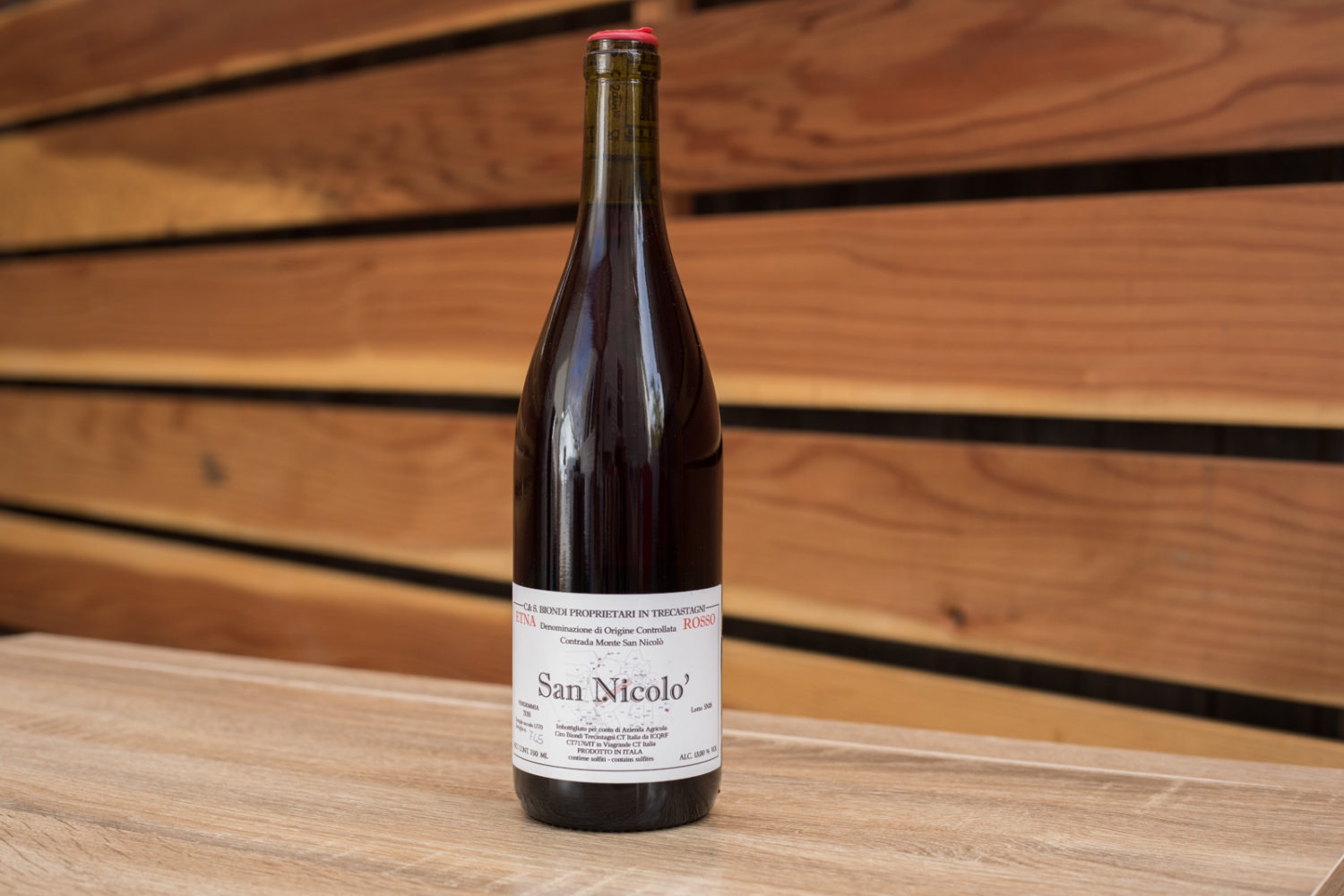
No other wine this year left a firmer impression of its sense of place than the San Nicolo’.
Wine allows us to explore many different levels of curiosity at once. One night, you can be ruminating on maceration techniques and hyper-local grape varieties, another night it could be the art of blending. This year, I found myself refreshing my memory on a host of topics that reside far outside the vineyard, good and bad. (For instance, several broken wines had me revisiting Jamie Goode’s Flawless: Understanding Faults in Wine for a refresher on dreaded wine flaws).
And then, in the midst of all this technical studying, I came across this magical wine to plant my feet firmly back in the most important topic of all: terroir.
Even while tasting it from halfway around the world, Ciro Biondi’s 2018 San Nicolo’ Etna Rosso speaks of site specificity, especially when it is tasted alongside the estate’s 2018 Cisterna Fuori Etna Rosso — another stunning single-vineyard wine. The two vineyards are adjacent to one another, but as we often find on Europe’s most active volcano, Mount Etna, exposure to the elements and the age of the volcanic soil impart vastly different characteristics.
Cisterna Fuori is all fireworks: savory, salty, powerful and tannic. In San Nicolo’, we find something else: a volcano rolling out the welcome mat. Both wines have that aromatic signature of Etna (a crisp, cherry core outlined with ash and salt water), but in San Nicolo’, there is ample grace and agility, enough to allow the often-hidden traits of Nerello Mascalese to shine, such as an herbal note, a lightness of body and a ghostly finish.
No other wine this year, not even the spectacular Vodopivec “Origine” listed above, left a firmer impression of its sense of place than the San Nicolo’. And no other winemaker this year provided higher thrills across all of their wines than Ciro Biondi, whose “Outis (Nessuno)” Etna Bianco deserves a special mention for its agility and value.
*Learn more about these icons.
Imported by Oliver McCrum Wines
Other Elegant Red Wines I Loved:
- 2018 Ciro Biondi Cisterna Fuori Etna Rosso
- 2017 Benanti Contrade Cavaliere Etna Rosso
- 2018 Azienda Agricola Sofia “La Vigna di Gioacchino” Etna Rosso
- 2017 Masseria del Pino “I Nove Fratelli” Etna Rosso
- 2016 Tascante Contrada Sciaranuova Etna Rosso
- NV Calabretta “Cala Cala” Vino Rosso
- 2017 Gurrieri Cerasuolo di Vittoria
- 2019 O Estranxeiro “Garda de 7 Meses” Ribeira Sacra
- 2018 Domaine Glimavos Vlahiko Ioannina
Note: Some of these wines were provided as samples by the winery’s importer or a regional promotion agency, often after we approached them surrounding a story idea. Those include: Ciro Biondi (Oliver McCrum Wines), Azienda Agricola Sofia (Polaner Selections), Albert Boxler and Barmès-Buecher (by Wines of Alsace), and Luigi Tecce. The remaining wines were purchased with our editorial budget, which is funded by virtual tastings and subscriptions. Learn more about our editorial policy, and learn more about how you can support our work with a subscription.
